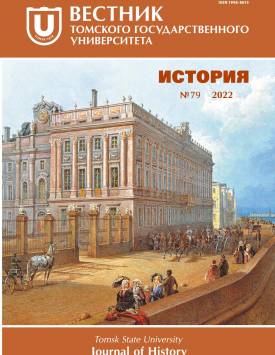Social communication and creating an inclusive culture at the university (on the example of Tomsk State University of Control Systems and Radioelectronics)
The authors define an inclusive culture as a level of development expressed in a humane, tolerant and safe attitude of people towards each other. The creation of an inclusive culture in the ecological space of the university is based on the development of social interaction, mutual respect between people, regardless of what social group they belong to. Students with disabilities are supported by law with special learning conditions, which contributes to the equalization of the rights of this group of young people in obtaining higher education. The small number of this group does not reduce the importance of the problems of inclusive education in higher education and does not eliminate the problems of their stigmatization and exclusion. The development of social activity and the formation of positive interaction between students with and without disabilities contributes to the development of the potential of both groups. Social communication becomes the basis for the creation of inclusion, it is a process of information dissemination aimed at the transition from the medical model of disability (perceptions of people with disabilities as helpless people) to social one (perceptions of the need for their personal development). A questionnaire-based survey of students of all courses and faculties of the university showed, on the one hand, a high level of their communication skills in the social sphere, in the field of logical thinking and intellectual development, which is a factor of inclusion, but, on the other hand, it showed a high level of emotional instability and conformity. The main information channel of social interaction between people is verbal communication. In order to establish the relationship between the faculty, the course, the gender of the students, on the one hand, and the above factors, on the other hand, a correlation analysis was carried out. The Spearman technique has been used to identify correlations between the variables identified by the test results, as well as the Mann-Whitney method to determine the relationship between these variables and the course, faculty, and gender of the respondents. Thus, in order to build equal relations in a university, thoughtful educational work is needed. In addition, the authors had to explain the principles of inclusion for clarity and in an accessible, "clear language" style. It is possible to determine the main methods for the creation of an inclusive culture among TUSUR students, if we take into account their communication features: personal experience (including extracurricular) of communicating with disabled people, brochures, manuals and other material, classes in the Education design format. Each of these methods will have an impact predominantly on the majority of students in a particular faculty, contributing to the formation of an inclusive culture. The authors declare no conflicts of interests.
Keywords
inclusive culture, social communication, correlation analysisAuthors
| Name | Organization | |
| Zinovieva Valentina I. | Tomsk State University of Control Systems and Radioelectronics | valentina.i.zinoveva@tusur.ru |
| Bersenev Maxim V. | Tomsk State University of Control Systems and Radioelectronics | m.bersenev@gmail.com |
References

Social communication and creating an inclusive culture at the university (on the example of Tomsk State University of Control Systems and Radioelectronics) | Tomsk State University Journal of History. 2022. № 79. DOI: 10.17223/19988613/79/23
